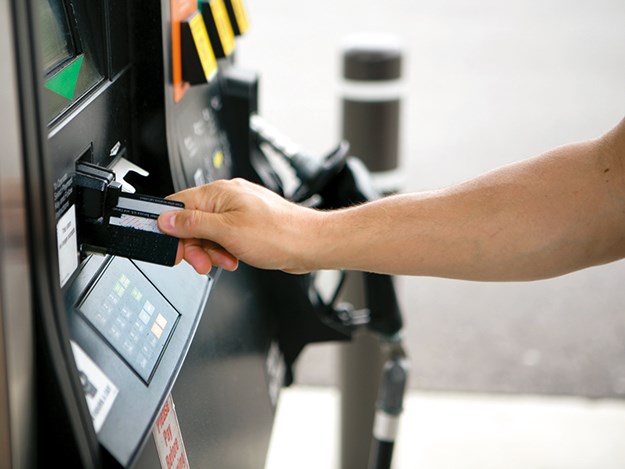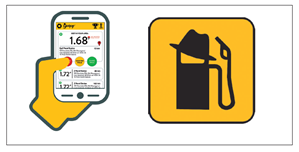
Spring is here and the RV season is gaining momentum. Money saved on fuel means we can travel further and do more when we get there, and, more importantly, it is easier on the planet. Here are some strategies to help make this happen.
Fuel cards
If you don’t have a fuel card, think seriously about getting one. Better still, get one for each major fuel brand. They can save up to 10 cents/litre and are easier to manage than supermarket vouchers.Gaspy app
The Gaspy app helps you find the lowest priced petrol or diesel near you. The app also has a popular gaming aspect that allows users to collect Spy Coins and Badges for completing missions regarding fuel pricing. The game is great fun for regular travellers, and the motorhoming community enjoys competing among themselves on the leaderboards. Motorhomers are invaluable to the app in terms of accuracy because they regularly visit small out-of-the-way places and update the local prices, and are always quick to contact Gaspy about closures or misuse issues. Gaspy comes in two versions: the free one with advertising, or the Gold version without advertising but a $1.69 monthly fee.

Get serviced
When idle over winter, an RV’s tyres lose pressure. It is easy to overlook the fact that tyres on motorhomes and caravans typically run at up to twice the pressure of a family sedan so keeping them at the correct pressure is key to optimum fuel economy. Under-inflated tyres increase fuel use. A mere 1 percent tyre underinflation can increase fuel consumption by 3 percent. Check air filters and oil filters to see if they need replacing. Engine management computers compensate for clogged filters by using more fuel. Clearing ‘the clog’ can save fuel. If DIY is not your thing, include these items in an end-of-winter vehicle service before venturing out.Lighten up
Don’t carry what you don’t need. Water tanks are a good example. If there is water available near your destination, get it there rather than carry it from home. Empty your grey water (and toilet cassette) at the first opportunity. Fresh water for a ‘cuppa’ in transit can travel in a bottle in the RV if you travel ‘empty’. Every month or so go through the gear in your RV. If you haven’t used an item during the past three months, you probably don’t need it. Every kilo counts. Lightening your RV will save fuel as well as improving vehicle handling and making it safer on the road.Walk the wire
Balance is the key ingredient here. While more important for caravans, it applies to motorhomes as well. Heavy items should be carried as close to floor level as you can get and positioned over or between the axles. Doing this will improve vehicle handling, safety and fuel consumption. Fore and aft balance on a car/caravan rig is another fuel consumption factor. Excessive tow-ball weight can increase fuel consumption.Easy on the air-con
Save your air-con for the really hot days. They can be significant consumers of engine power output and increase fuel consumption by 5 percent and upwards. It’s hard to give up, and it’s near the bottom of my list of fuel economy sacrifices. But the option is yours to take.Be a smooth operator
Watch a tightrope walker and you will see every action is smooth and deliberate. So too with economical driving. Avoid rapid acceleration and driving fast. It can use up to 25 percent more fuel. Improve your fuel economy by moving off at a steady pace and travelling at a constant speed. Cruise control is a useful contributor on flat highways. Up and down hills don’t suit most cruise control systems, making them fuel-hungry rather than fuel-efficient.Do distance craftily
We are talking strategy here. Avoid single destination journeys when the destination is a long way from base. Save that trip until you can combine it with other points of interest you want to visit. Here’s a tip for unstructured trips. You’re based in Christchurch and have a couple of weeks to travel down the east coast to see your highlighted destination, the Catlins. Here is the plan. Leave Christchurch and go, no stops, straight to the Catlins. Once you have seen the Catlins, head back up the coast stopping where you want for as long as you want. When your time is up, head for home knowing you gave the Catlins your best shot and the part remaining to be seen is just a short journey from home. Taking the time to bring down your fuel usage not only saves money, it ultimately helps the planet too.Find more motorhomes for sale in NZ





